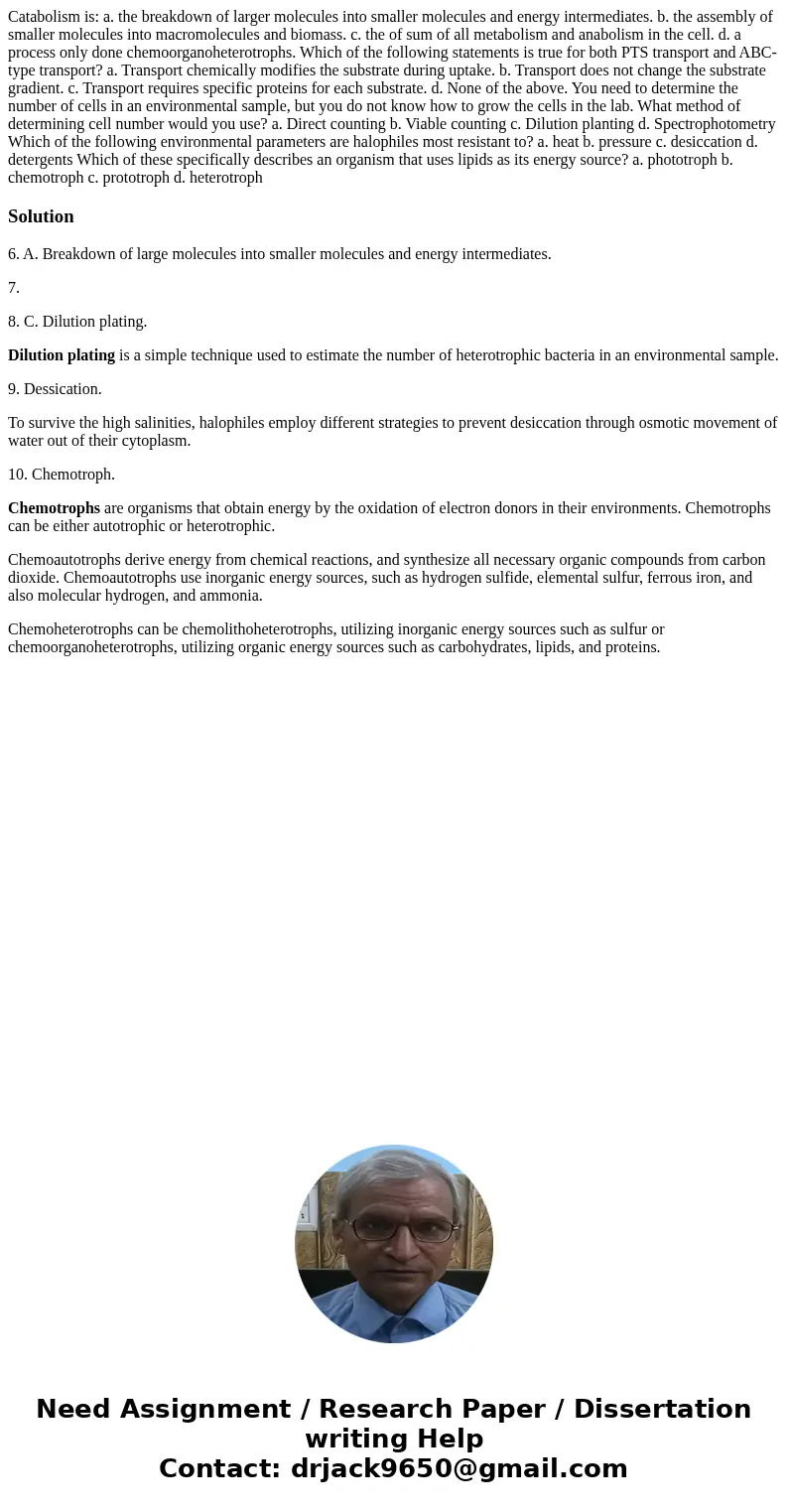Catabolism is a the breakdown of larger molecules into small
Solution
6. A. Breakdown of large molecules into smaller molecules and energy intermediates.
7.
8. C. Dilution plating.
Dilution plating is a simple technique used to estimate the number of heterotrophic bacteria in an environmental sample.
9. Dessication.
To survive the high salinities, halophiles employ different strategies to prevent desiccation through osmotic movement of water out of their cytoplasm.
10. Chemotroph.
Chemotrophs are organisms that obtain energy by the oxidation of electron donors in their environments. Chemotrophs can be either autotrophic or heterotrophic.
Chemoautotrophs derive energy from chemical reactions, and synthesize all necessary organic compounds from carbon dioxide. Chemoautotrophs use inorganic energy sources, such as hydrogen sulfide, elemental sulfur, ferrous iron, and also molecular hydrogen, and ammonia.
Chemoheterotrophs can be chemolithoheterotrophs, utilizing inorganic energy sources such as sulfur or chemoorganoheterotrophs, utilizing organic energy sources such as carbohydrates, lipids, and proteins.

 Homework Sourse
Homework Sourse